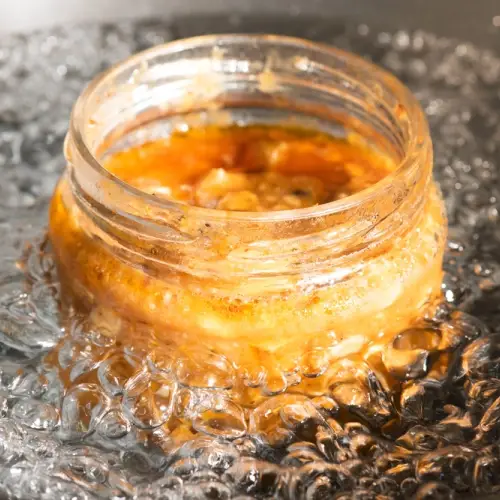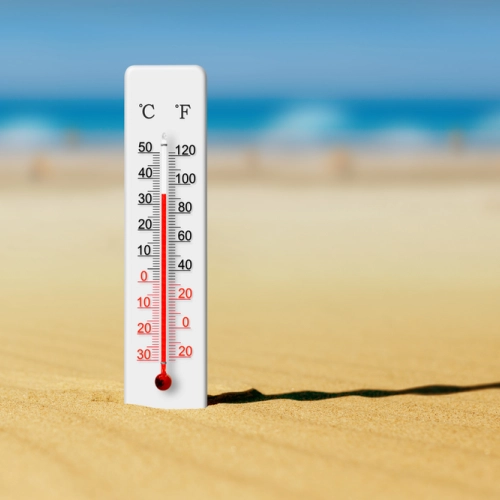
When we hear the term "thermal equilibrium," it can often seem complicated, but it is actually a concept that refers to something we experience daily, even if we don't notice it.
Thermal equilibrium is a state in which two or more bodies (or systems) reach the same temperature and therefore no longer exchange thermal energy between them. To understand this clearly, let's look at some important details about the concept.
What is heat?
Before we delve into thermal equilibrium, it is important to understand what heat is.
Heat is a form of energy that is transferred between bodies due to temperature differences. This flow of energy always occurs from the warmer body to the cooler body, and the process continues until both bodies reach the same temperature.
This moment when they stop exchanging heat is what we call thermal equilibrium .
The heat exchange process
 Imagine you have a hot cup of coffee in a room at room temperature. At first, the temperature of the coffee is much higher than the temperature of the air around it. As the coffee is warmer, it starts to lose heat to the air around it. Meanwhile, the air around it absorbs that energy.
Imagine you have a hot cup of coffee in a room at room temperature. At first, the temperature of the coffee is much higher than the temperature of the air around it. As the coffee is warmer, it starts to lose heat to the air around it. Meanwhile, the air around it absorbs that energy.
This heat exchange will continue until the temperature of the coffee and the air are equal. At that point, they are in thermal equilibrium, meaning there will be no more heat transfer between them.
This is a simple example of how thermal equilibrium works, but the interesting thing is that this phenomenon occurs in many aspects of our daily lives, even if we do not always perceive it.
Zeroth law of thermodynamics
 Thermal equilibrium is best understood if we introduce the zeroth law of thermodynamics.
Thermal equilibrium is best understood if we introduce the zeroth law of thermodynamics.
This law is quite simple and states: "If two bodies are in thermal equilibrium with a third body, then they are also in thermal equilibrium with each other." Although it seems obvious, this law is fundamental to defining temperature as a physical property that can be measured.
Imagine three bodies: A, B, and C. If body A is in thermal equilibrium with body B, and body B is in thermal equilibrium with body C, the law tells us that A and C must also be in thermal equilibrium. This establishes a very useful transient relationship that allows, among other things, the calibration of thermometers.
How is thermal equilibrium achieved?
Thermal equilibrium can be achieved through several heat transfer mechanisms: conduction, convection and radiation .
Driving
Conduction is the process by which heat is transferred through a solid material.
This happens when the molecules in a warmer part of the object vibrate more rapidly and transfer their energy to the cooler, adjacent molecules. A good example of this is when you touch a metal spoon that has been dipped into a cup of hot soup. The heat from the soup is transferred to the spoon by conduction, and if you hold it for long enough, the spoon will become hot enough for you to feel the increase in temperature.
Convection
Convection is the process by which heat is transferred in fluids (liquids and gases) through the movement of the fluid particles.
A classic example is a pot of water on a stove. As the water at the bottom of the pot heats up, it becomes less dense and rises to the top, while cooler, denser water sinks. This cycle creates a convection current, which helps distribute heat evenly throughout the liquid.
Radiation
 Finally, we have radiation, which is the transfer of heat through electromagnetic waves. Unlike conduction and convection, radiation does not require a physical medium for heat to be transferred.
Finally, we have radiation, which is the transfer of heat through electromagnetic waves. Unlike conduction and convection, radiation does not require a physical medium for heat to be transferred.
A good example of radiation is how we feel the heat of the sun on our skin, even when we are millions of miles away. Thermal energy is transferred through the vacuum of space by electromagnetic radiation.
Another example is solar collectors, which use solar radiation to obtain hot water.
Factors affecting thermal equilibrium
There are several factors that can influence how quickly thermal equilibrium is reached between two bodies.
- Initial temperature difference : The greater the temperature difference between two bodies, the faster the heat exchange process. For example, if you pour boiling water into a glass at room temperature, the initial cooling process will be rapid, but it will slow down as the water and the environment approach the same temperature.
- Thermal properties of materials : Some materials are better conductors of heat than others. Metal, for example, is a good conductor of heat, while air or wood are not so good. This is why a metal object will heat up or cool down faster than one made of wood when placed in contact with a heat source.
- Size and shape of bodies : The size and shape of bodies also affect the rate at which thermal equilibrium is reached. Smaller objects tend to reach thermal equilibrium more quickly than larger objects, since they have less mass to heat or cool. Also, objects with larger surface areas will have a higher rate of heat exchange due to the greater area of contact.
- Insulation : Good thermal insulation can slow down the heat exchange process and thus delay the achievement of thermal equilibrium. This is why we use insulation in our homes or thermoses to keep our coffee hot. These materials do not completely prevent heat exchange, but they do slow it down a lot.
Practical examples of thermal equilibrium
In daily life, we encounter many examples of thermal equilibrium.
From the moment you step into a hot shower and feel your body begin to equilibrate with the temperature of the water, to when you leave a cold drink on the table and it eventually warms up to room temperature, these are all thermal equilibrium processes in action.
 A more interesting example is the use of thermometers . Thermometers work based on the principle of thermal equilibrium.
A more interesting example is the use of thermometers . Thermometers work based on the principle of thermal equilibrium.
When you put a thermometer in contact with something, for example your skin, the liquid inside the thermometer (which is often mercury or coloured alcohol) heats up or cools down until it reaches the same temperature as your skin. The thermometer stops changing when thermal equilibrium is reached, and we can then read the correct temperature.
Thermal equilibrium and the second law of thermodynamics
Thermal equilibrium is also closely related to the second law of thermodynamics, which says that the entropy of a closed system always tends to increase. In other words, systems naturally tend toward a state of equilibrium, where energy is distributed evenly and there are no temperature differences driving heat flow.
This has very important implications for energy efficiency.
For example, in a heat engine, the objective is to take advantage of the temperature difference between two bodies to perform work. However, according to the second law of thermodynamics, there will always be energy losses due to the tendency of the system to reach thermal equilibrium.